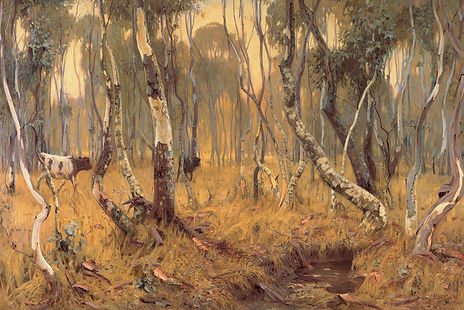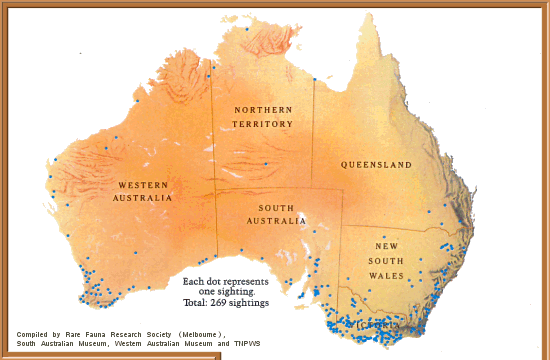top of page


the thylacine project
A Brief History of the the Thylacine

A painting by Joseph M. Gleeson, 1902, of a female thylacine and pups.
Why did the thylacine become extinct?
Here are certain factors that ultimately led to the thylacine's demise in Australia:
Feral dogs (introduced species): Until the arrival of European settlers in Tasmania during the 17th century, the fate of the thylacine rested entirely on natural factors. But, unfortunately, as for many animals, the thylacine population was hindered by the introduction of feral species, such as feral dogs, in Australia. Thylacines were constantly competed with by feral dogs during hunting, as their prey was targeted, leaving difficulties in finding sufficient food. Furthermore, thylacines were mistakeningly targeted by farmers for destroying livestock, such as marino sheep, when in reality, feral dogs were often to blame.
Bounties (direct human extermination): Although this is an obvious factor, it is not the sole reason for the demise of the thylacine. Bounties were set up by the Tasmanian government to exterminate the thylacine, as a "pest", offering one pound for each adult scalp and ten shillings for sub-adults.In the end, 2184 animals were collected on bounties.
Lack of prey (introduction of species): Another suspected factor is the decline of prey, such as potoroos, bats, birds, wombats or bandicoots, for the thylacine, as feral dogs may have been to blame, being known as competition for thylacines.
Declines in the species are listed below (from Australian Government website):
1830 - Van Diemens Land Company introduced a Thylacine bounty
1888 - Tasmanian Parliament placed a price of £1 on Thylacine's head
1909 - Government bounty scheme terminated: 2184 bounties paid
1910 - Thylacines rare - sought by zoos around the world
1926 - London Zoo bought its last Thylacine for £150
1933 - Last Thylacine captured, Florentine Valley, sold to Hobart Zoo
1936 - World's last captive Thylacine died in Hobart Zoo (7 September 1936)
1936 - Thylacine added to the list of protected wildlife
1986 - Thylacine declared extinct by international standards
Are thylacines extinct or critically endangered?
In many instances, thylacines have been reported to be spotted around Tasmania during recent years, by experts, tourists and locals alike.

As seen above, there have been 269 apparent "sightings" of the thylacine.
Below is a list of thylacine surveys conducted, in order to find it in the wild (from Australian Government website):
1937 - Sergeant Summers leads a search in the north-west of the State, recording many recent sightings by other persons in a large area between the Arthur and Pieman Rivers, although the party itself did not see any Thylacines. He recommends a sanctuary in that area.
1945 - Well-known naturalist David Fleay searches the Jane River to Lake St Clair area, finding possible Thylacine footprints.
1959 - Eric Guiler leads a search in the far north-west, an area which produced many bounties, and finds what appeared to be Thylacine footprints.
1963 - Eric Guiler leads a search in the Sandy Cape area but finds no evidence.
1968 - Jeremy Griffiths, James Malley and Bob Brown embark on a major search. Although they collect reports of sightings, they find no evidence of the Thylacine.
1980 - Parks and Wildlife Officers, Steven Smith and Adrian Pyrke, search a wide area of the State using three automatic cameras. No evidence of Thylacines is found.
1982–83 - Parks and Wildlife Officer, Nick Mooney, undertakes an extensive but unsuccessful search to confirm the 1982 sighting reported by Hans Naarding near the Arthur River in the State's north-west.
1984 - A search in Tasmania's highlands by Tasmanian Wildlife Park owner, Peter Wright, fails to turn up conclusive evidence.
1988–93 - Separate photographic searches by wildlife photographer, Dave Watts and Ned Terry, fail to record a Thylacine.
bottom of page